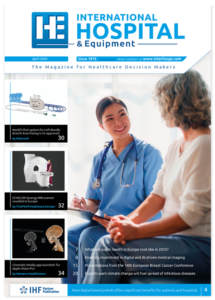Sacred connections: How meaningful patient encounters are rescuing exhausted physicians
A landmark survey in the United States has revealed that deeply meaningful patient encounters, termed “sacred moments,” could offer a powerful antidote to the epidemic of physician burnout plaguing healthcare systems worldwide.
The comprehensive study, published in JAMA Network Open on 30 May 2025, surveyed 629 randomly selected US internal medicine physicians and found that 67.7% had experienced sacred moments with patients – brief periods of profound connection that transcend ordinary clinical interactions.
Defining sacred moments in healthcare
Researchers defined sacred moments as “deeply memorable, and sometimes spiritual moments shared between physicians and patients – as if time stood still. These may happen spontaneously during times of crisis or sadness, or conversely during times of great joy.”
Lead author Jessica Ameling and colleagues from the University of Michigan Medical School discovered that these transcendent encounters are far more common than previously recognised, yet physicians rarely discuss them with colleagues – a missed opportunity that could significantly impact professional wellbeing.
Frequency reveals protective benefits
The study’s most striking finding emerged from analysing the frequency of these experiences. Whilst simply having experienced a sacred moment showed no significant association with reduced burnout, physicians who encountered them “a few times per year or more frequently” demonstrated markedly lower odds of extreme burnout compared to those experiencing them less often.
“Those experiencing sacred moments a few times per year or more frequently had reduced odds of extreme burnout (OR, 0.29; 95% CI, 0.14-0.60; P = .001),” the authors reported, suggesting a dose-response relationship between meaningful patient connections and professional resilience.
The power of sharing experiences
Perhaps more surprisingly, the research revealed that discussing sacred moments with colleagues provided substantial protection against burnout. Among physicians who had experienced these moments, those who shared them with professional peers showed significantly reduced odds of both single manifestation burnout and extreme burnout.
“Additionally, among those experiencing a sacred moment, discussing these moments with colleagues was found to be protective against burnout,” the authors noted. Yet the survey revealed a troubling disconnect: whilst 76.5% of physicians agreed that sacred moments helped them feel less burned out, only 4.5% frequently discussed these experiences with colleagues.
Spiritual and purposeful foundations
The research identified three key themes associated with experiencing sacred moments: spiritual or religious beliefs, sense of purpose in life and work, and interpersonal connections. Physicians who considered themselves “very spiritual” showed more than double the odds of experiencing sacred moments (OR, 2.23; 95% CI, 1.44-3.44).
Similarly, having a strong sense of purpose in both life and work nearly doubled the likelihood of these transformative encounters, whilst engaging in community activities like volunteering and attending social events also increased the odds.
Addressing the burnout crisis
The findings arrive at a critical juncture for healthcare, with physician burnout rates reaching alarming levels. The study documented that 61.4% of respondents met criteria for at least one manifestation of burnout, whilst 9.8% experienced extreme burnout across all measured domains.
“Because of the extremely high rates of burnout among physicians, we were interested in studying whether sacred moment experiences could mitigate physician burnout,” the authors explained. Their hypothesis proved partially correct, with frequency and sharing emerging as key protective factors.
Practical interventions on the horizon
The research suggests concrete pathways for healthcare organisations to foster these beneficial experiences. The authors propose both systemic and individual interventions, including redesigning clinical spaces to promote deeper connections, supporting continuity of physician-patient relationships, and creating dedicated forums for sharing sacred moment experiences.
“Creating a clinical milieu to make these moments more likely to occur and be discussed could decrease burnout rates among physicians,” the researchers concluded. “Potential interventions could include dedicated conferences for sacred moment story sharing or platforms such as podcasts or websites devoted to the collection of sacred moments.”
Study limitations and future directions
The research acknowledges several limitations, including a 44.3% response rate and focus solely on internal medicine physicians without subspecialty training. The cross-sectional design also prevents establishing causation between sacred moments and burnout reduction.
Future research opportunities include examining sacred moment variations across medical specialties, comparing experiences between physicians and other healthcare professionals, and developing targeted interventions to cultivate these meaningful encounters.
The study’s implications extend beyond individual physician wellbeing to encompass patient-centred care quality. As healthcare systems grapple with widespread professional burnout, recognising and nurturing these profound human connections may offer a path toward both healing the healers and enhancing the therapeutic relationship at medicine’s core.
Reference
Ameling, J., Houchens, N., Greene, M. T., Ratz, D., Quinn, M., Kuhn, L., & Saint, S. (2025). Sacred moment experiences among internal medicine physicians. JAMA Network Open, 8(5), e2513159. https://doi.org/10.1001/jamanetworkopen.2025.13159


